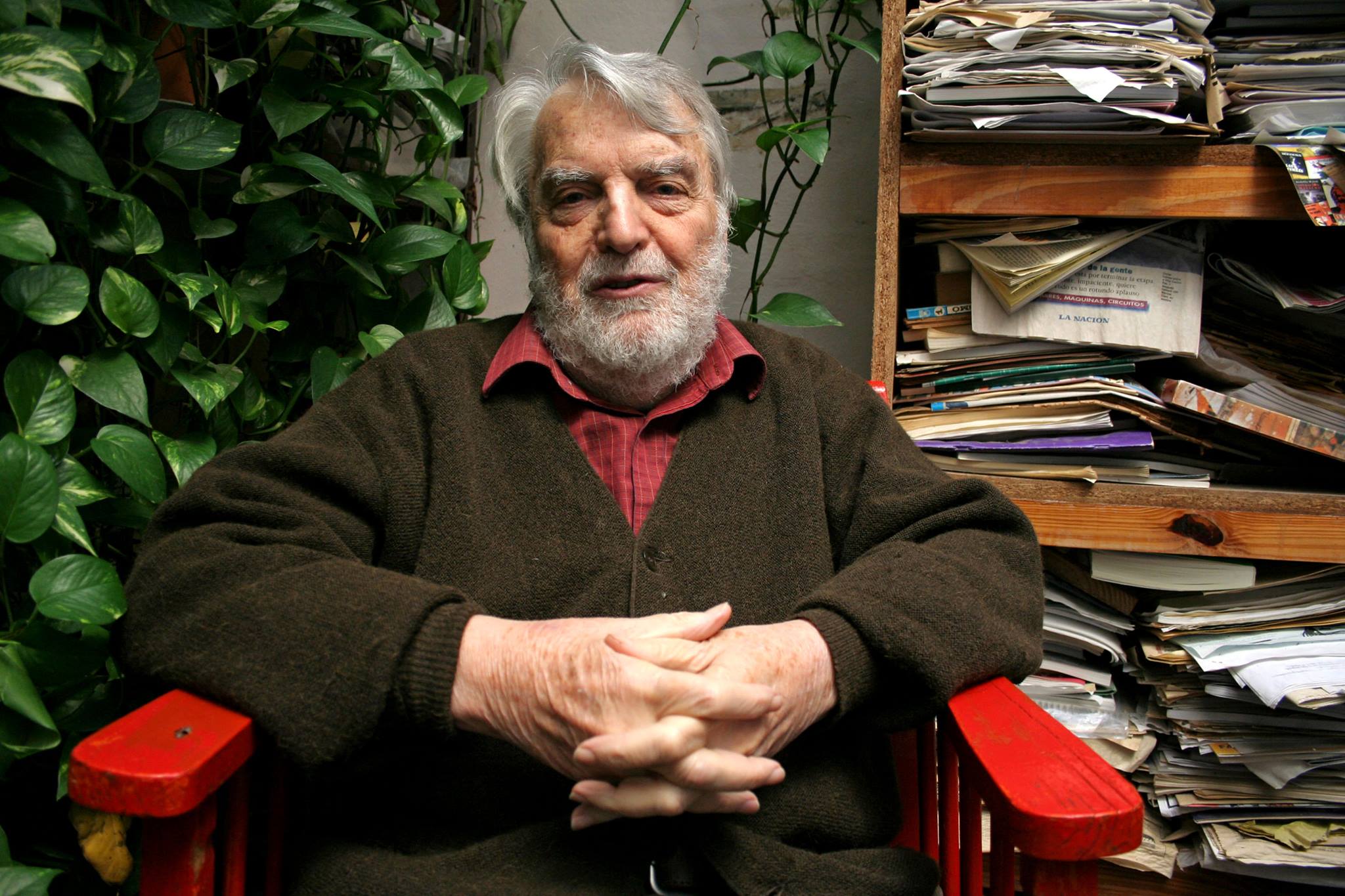Osvaldo Bayer, a renowned anarchist writer, historian and journalist, died on the afternoon of December 24 in his house in the Belgrano neighborhood of Buenos Aires. He was 91.
Bayer was born on February 18, 1927 in the province of Santa Fe. He studied history at the University of Hamburg, Germany. He contributed extensively to the fields of human rights, literature and journalism, and was awarded the degree of Honoris Causa by seven prominent Latin American universities. He was the honorary secretary of the Press Workers Union of Buenos Aires (SiPreBA).
He is best known for his work La Patagonia Rebelde (Rebellion in Patagonia). The book is a result of his research on the violent repression of rural workers between 1920 and 1922 in the province of Santa Cruz in the Patagonia region of Argentina. The book reveals how nearly 1,500 workers were slaughtered by the Argentine army, operating under the influence of the dominant sectors and the Argentine patrician families. For this book, as well as his other investigations that gave an account of the oppression perpetrated by the Argentine oligarchy, he was censored, persecuted and threatened. He was forced into exile but was one of the prominent voices from abroad that denounced the state repression of the dictatorship in Argentina. When he returned in the 1980s, he kept his convictions firm and fiercely defended ethics and human rights.
On December 28, hundreds gathered in the Alberti Plaza in Belgrano to remember the “poet of freedom”, the tireless defender of Indigenous people, workers, women, peasants and all oppressed people. Several spoke at the event remembering the maestro through anecdotes, recalling his work, research and above all his commitment to the struggle.
Feminist Liliana Daunes shared some words, “Dear Osvaldo, comrade of utopias, we will miss you but we will bring you with us in every struggle. We celebrate your life, always. Bye, we will meet soon, until victory, beloved teacher and brother, coherent and libertarian”.
He was also remembered by Irma Caupan Perriot an indigenous activist from March of Indigenous Women for a Good Life, who recalled Osvaldo’s conviction to the support the struggle of indigenous people and to uncover the bloody and genocidal truths about the “heroes” of the country. Bayer led a campaign to take down all statues and homages to army general and president Julio Argentino Roca who led the “Conquest of the Desert”, the military campaigns of extermination and genocide of the indigenous people in Argentina in the late 19th century. Bayer called for the statues, streets and other homages to replaced and renamed with remembrances to Indigenous women.
Following Bayer’s death, a campaign was launched on social media calling for the street Ramón Falcón, to be renamed Osvaldo Bayer, and on Wednesday December 26 Myriam Bregman of the Socialist Workers’ Party presented a bill proposing the same. Falcón was the police captain in Buenos Aires at the beginning of the 20th century and is remembered for leading heavy repression of workers, immigrants, social activists and anarchists.
Osvaldo was celebrated by all for his unfailing commitment and conviction. As his son Cristian Bayer said during the act of homage in the plaza “Osvaldo is not gone. He was and will be present always, every December 8, the date of the massacre in the estancia Anita. He is with every one of us who continue the path that he showed us.”
